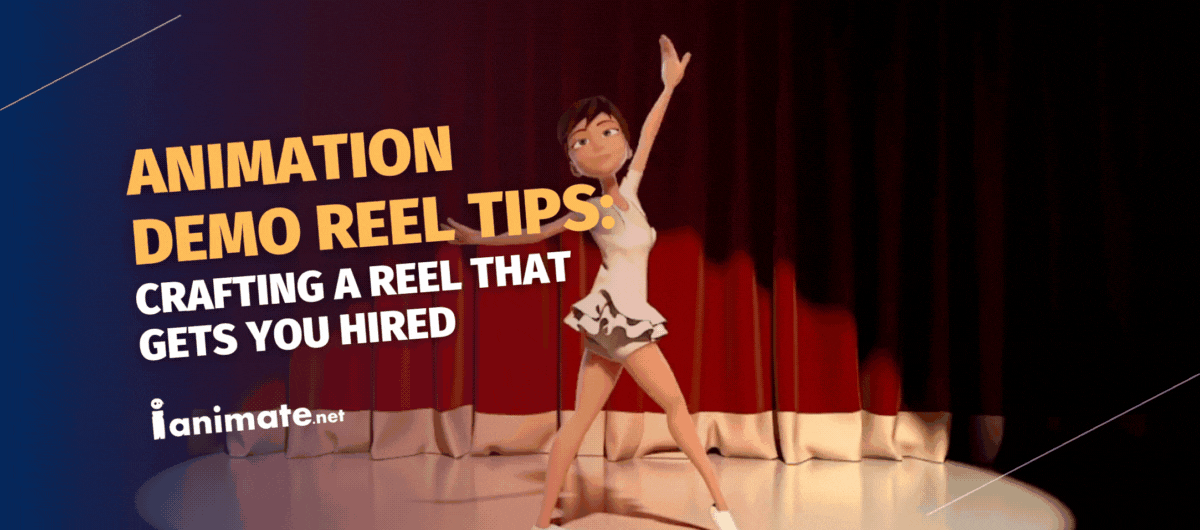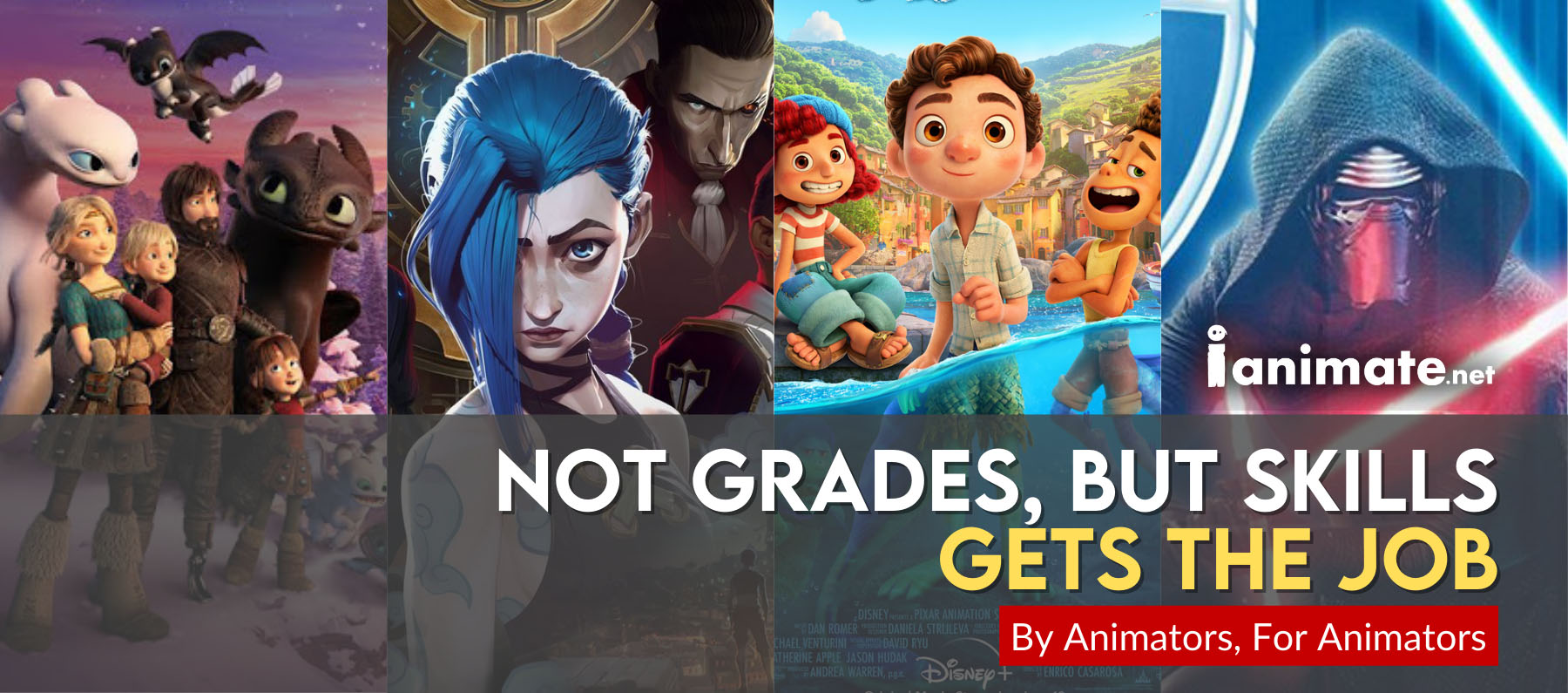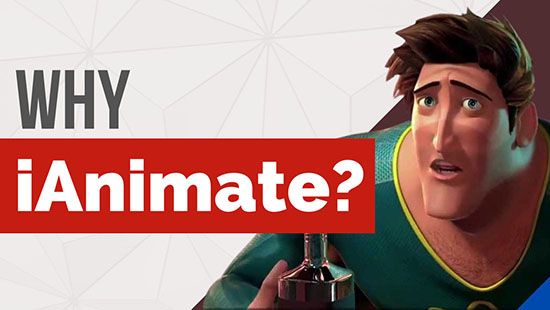Animation Demo Reel Tips: Crafting a Reel That Gets You Hired
Article by Richard Arroyo & iAnimate
In the competitive animation industry, these animation demo reel tips can make the difference between landing your dream job and being overlooked by studios. A well-crafted reel showcases not just your technical abilities but your unique creative vision and understanding of fundamental animation principles that directors are desperately searching for. Your demo reel is your visual introduction to potential employers—keep it concise, polished, and a true reflection of your outstanding animation skills.

Keep it Concise and Punchy: Respect the Viewer's Time
Ever wonder how long recruiters actually spend looking at your animation demo reel?
The harsh truth is that most industry pros will only watch the first 10-30 seconds before deciding whether to continue.
Animation demo reel tips: Your demo reel should always be short and sweet - aim for under two minutes maximum. Remember that studio recruiters and directors are reviewing dozens of reels on a regular basis, and their time is extremely valuable. The most successful demo reels grab attention immediately and maintain a tight focus on showcasing only the strongest animation skills.
At iAnimate.net, we've seen countless students land amazing jobs with reels under 60 seconds because they mastered the art of being concise. Think of your reel like a movie trailer - it should leave them wanting more, not feeling exhausted. A shorter reel forces you to be more selective, which naturally elevates the overall quality of what you're presenting.
For beginners, keeping your reel under one minute is even more critical since you're likely working with fewer polished pieces. Rather than padding your animation portfolio with mediocre work, focus on making every second count with your absolute best shots.
Focus on Quality, Not Quantity: Show Only Your Best Work
"Should I include everything I've ever animated in my demo reel?"
This is probably the biggest mistake we see animators make when putting together their animation demo reel. Your reel is only as strong as your weakest piece of animation. One amazing 10-second clip will impress recruiters far more than 2 minutes of just-okay work. Think about it - studios aren't hiring you for how much you can animate, they're hiring you for how well you can animate. At iAnimate.net, we constantly remind students that polished animation always trumps quantity when crafting a professional portfolio.
Animation demo reel tips: Including mediocre work just to make your reel longer actually damages your chances of getting hired. Recruiters and directors can spot filler content immediately, and it signals that you might not recognize the difference between your best and average work.
Ask yourself these questions about each clip:
- Would this impress my animation hero?
- Does this clearly demonstrate my best skills?
- Would I be proud to show this to my dream studio?
If you answered "no" to any of these questions, that clip doesn't belong in your reel.
Lead with Your Strengths: Put Your Best Work First
Ever wonder why you're not hearing back after sending out your demo reel? Animation demo reel tips: Most recruiters decide within the first 10 seconds if they'll watch the rest. Your opening shot is like a first impression on a job interview - you don't get a second chance at it. I've sat with hiring managers at major studios who admit they rarely watch past the 30-second mark if they aren't grabbed immediately.
Think about your own viewing habits - how long do you give a video before clicking away if it doesn't catch your interest? Front-loading your reel with your strongest animation creates that crucial striking impact that keeps eyes on your work.
Why your opening shots matter most:
- They set expectations for your overall skill level
- They demonstrate what you consider your best work
- They create momentum that pulls viewers through your entire reel
At iAnimate.net, we've seen countless students transform their job prospects just by rearranging their reels to lead with their strongest pieces. That character's performance with perfect timing? Put it first.
That complex action sequence with flawless body mechanics? That's your opener. Remember: your goal isn't just to show your animation skills - it's to make such a lasting impression that they can't wait to see what else you can do.
Tailor Your Reel: Target Your Audience
"Why am I not hearing back from studios when I send the same reel to everyone?"
One of the most overlooked animation demo reel tips is that a one-size-fits-all approach simply doesn't work. Just like you wouldn't wear a superhero costume to a formal job interview, your demo reel needs to match what each studio is looking for. Different animation studios have completely different needs and expectations. A games studio wants to see gameplay animation, combat mechanics, and character locomotion. A feature film studio is hunting for strong character performances, emotional weight, and storytelling ability. Commercial studios need to see quick, punchy animations that grab attention fast.
Match your reel to the studio type:
- Games → Show cycles, game mechanics, and responsive character movement
- Feature films → Showcase acting, emotional range, and character development
- Commercials → Demonstrate energetic motion graphics and eye-catching visuals
- TV → Display efficient animation that maintains quality under tight deadlines
At iAnimate.net, we teach students how to analyze a studio's specific style before applying and then highlight the work that best aligns with their needs. Remember that versatility is great, but targeted expertise is what gets you hired. Studios aren't looking for a jack-of-all-trades - they're looking for exactly the right animator for their specific project needs.
Showcase Your Skills: Include Relevant Animation Techniques
"What exactly should I put in my reel to prove I know what I'm doing?"
When it comes to animation demo reel tips, showing the right skills is like speaking the secret language that studios understand. Directors aren't just looking at your work - they're looking for specific techniques that prove you understand animation fundamentals. A solid walk cycle tells studios volumes about your grasp of weight, timing, and body mechanics. Remember that even the simplest animations can showcase your mastery of the principles that matter most.
Must-have skills to showcase:
- Character walk cycles that demonstrate weight and balance
- Body mechanics that show an understanding of physics and movement
- Camera placement that enhances storytelling
- Acting choices that reveal personality and emotion
- Weight shifts that feel believable and grounded
At iAnimate.net, we focus heavily on these core techniques because they're what hiring managers specifically look for. Even if you don't have professional work yet, simple exercises demonstrating these skills can get you noticed. Think about your reel as your technical interview - it needs to answer questions about your animation abilities before they're even asked.
Studios want to see that you understand the rule of thirds, field depth, and how to create cinematic scenes. The truth is that a perfectly executed walk cycle beats a flashy but flawed action sequence every single time.
Top 5 FAQs About Animation Exercises for Beginners
Q1: How long should my animation demo reel be?
A: Your animation demo reel should be concise and impactful - ideally between 60-120 seconds maximum. For beginners or those with fewer polished pieces, aim for under 60 seconds. Industry professionals typically make decisions within the first 10-30 seconds of viewing, so a shorter, higher-quality reel is significantly more effective than a longer one with filler content.
Q2: What should I include in my animation demo reel if I don't have professional work?
A: Focus on fundamental animation exercises that demonstrate your core skills: well-executed walk-and-run cycles, character handling heavy objects, acting scenes with dialogue, lip-syncing, and action sequences. Include specialized exercises like flour sack animations that showcase your understanding of weight and timing. Quality animation exercises that demonstrate strong fundamentals can be more impressive than mediocre professional work.
Q3: Should I create different reels for different studios or job applications?
A: Yes, customizing your demo reel for specific studios or positions is highly recommended. Different animation sectors value different skills - game studios want to see gameplay mechanics and character locomotion, film studios look for storytelling and emotional performances, and commercial studios seek quick, eye-catching visuals. Tailoring your reel shows you understand their specific needs and have researched their style.
Q4: What's the best order to arrange my animation clips?
A: Always lead with your absolute strongest piece, as most recruiters decide within seconds whether to continue watching. Front-load your reel with your most impressive and attention-grabbing work, then maintain quality throughout. End with your second-best piece to leave a lasting positive impression. Never include mediocre work simply to increase the length of your reel.
Q5: Should I use music or sound effects in my animation demo reel?
A: Use audio elements carefully. For lip-synced animation or work where dialogue is important, let the original audio be the focus and avoid adding background music that could distract. If using music, ensure it complements your animation style and pacing without overpowering the visual content. Many studios (including Pixar) actually recommend keeping audio minimal or turning the music off completely to keep the focus on your animation skills.






